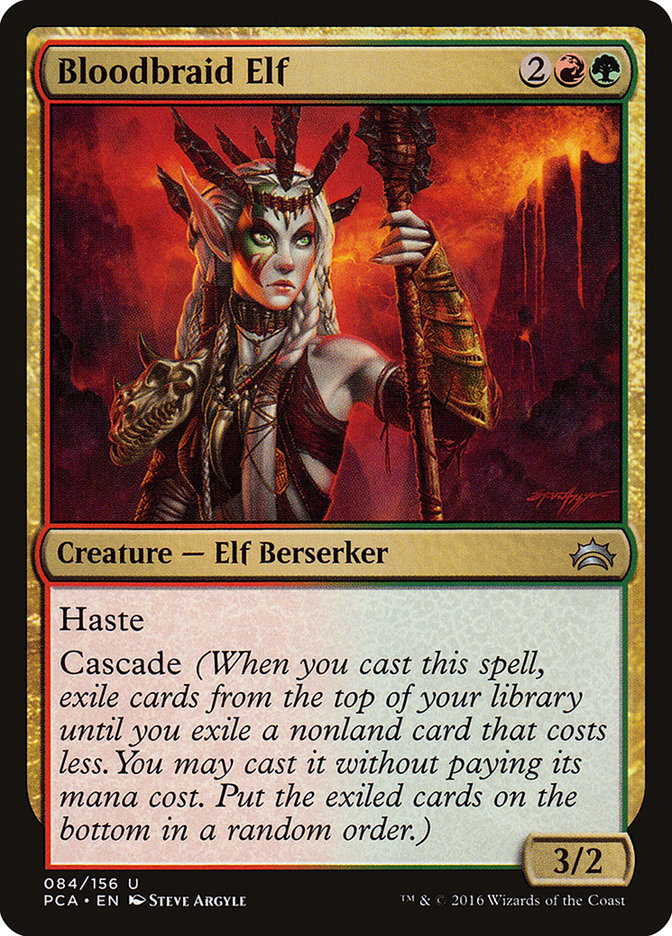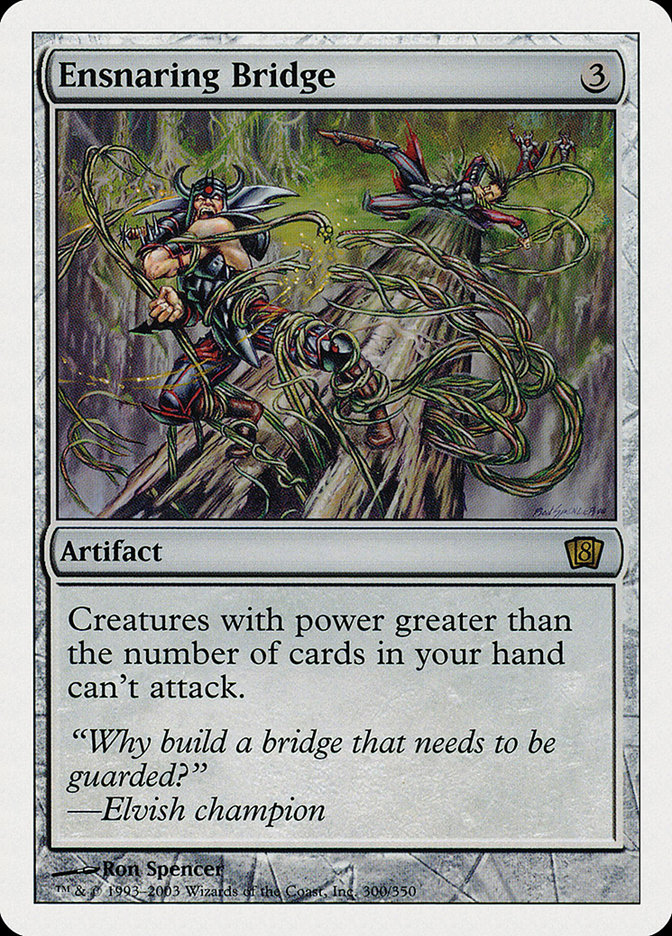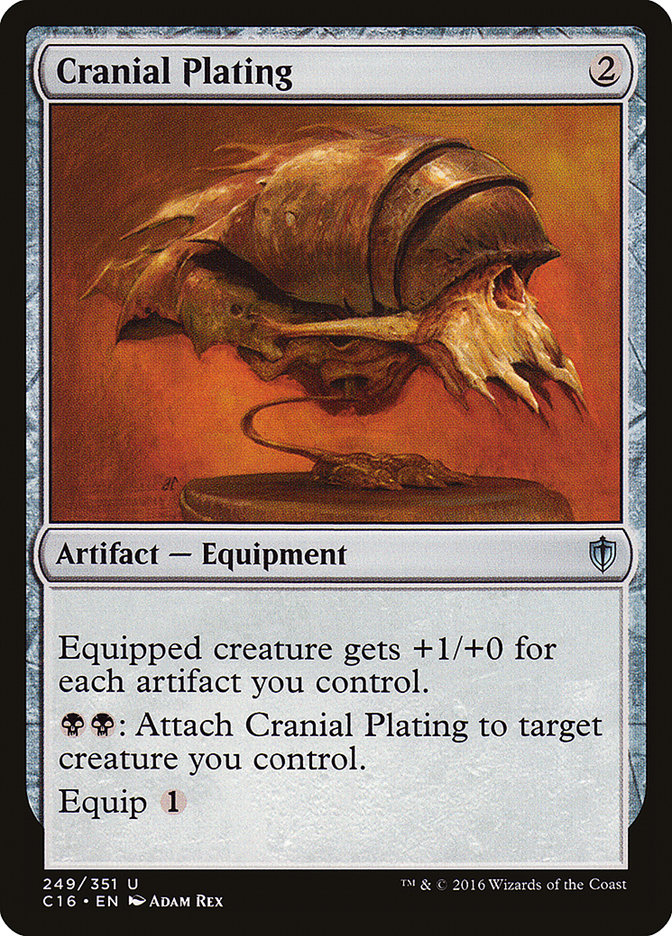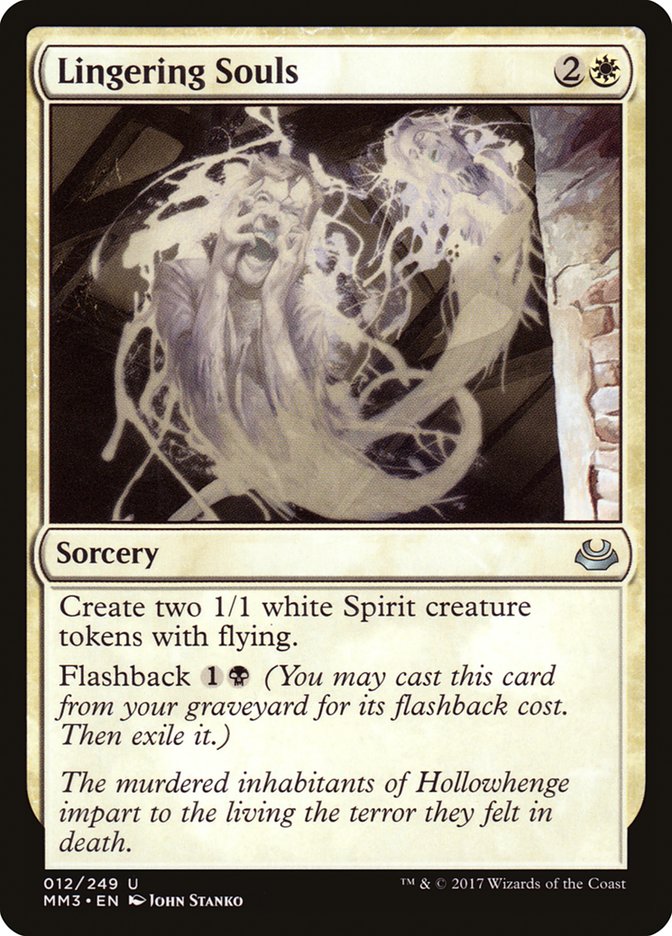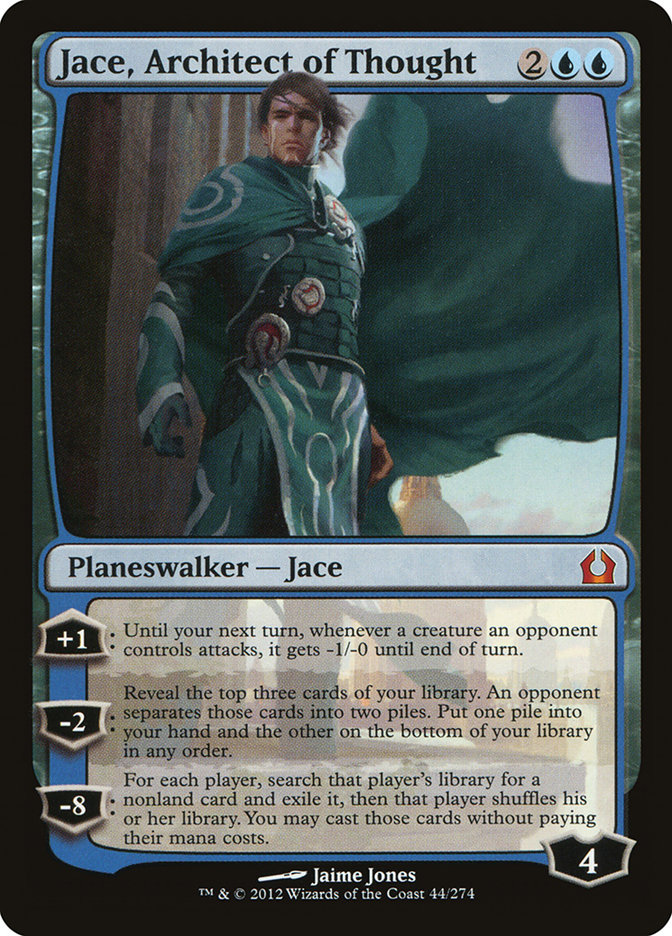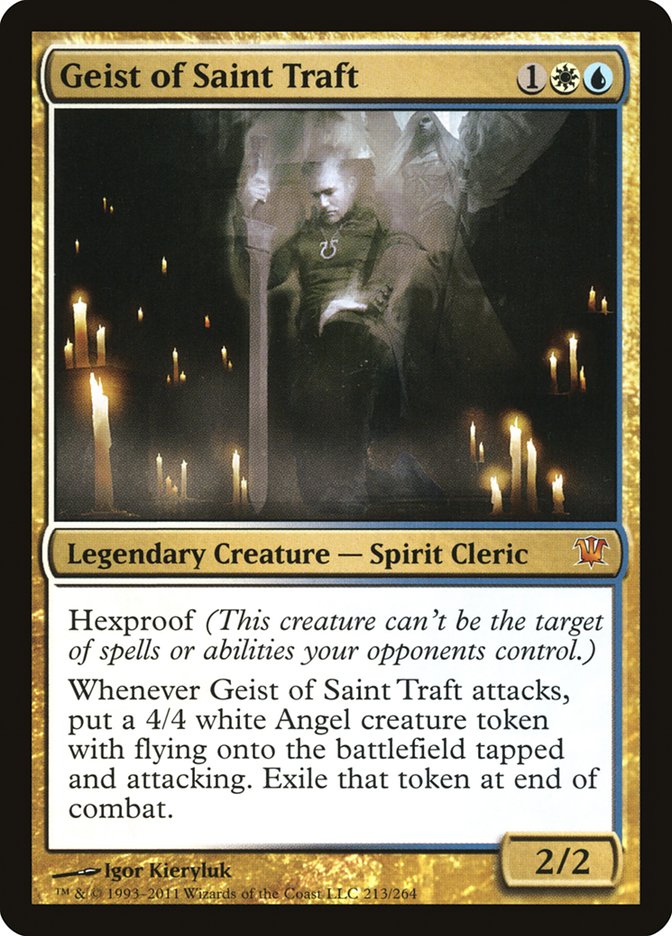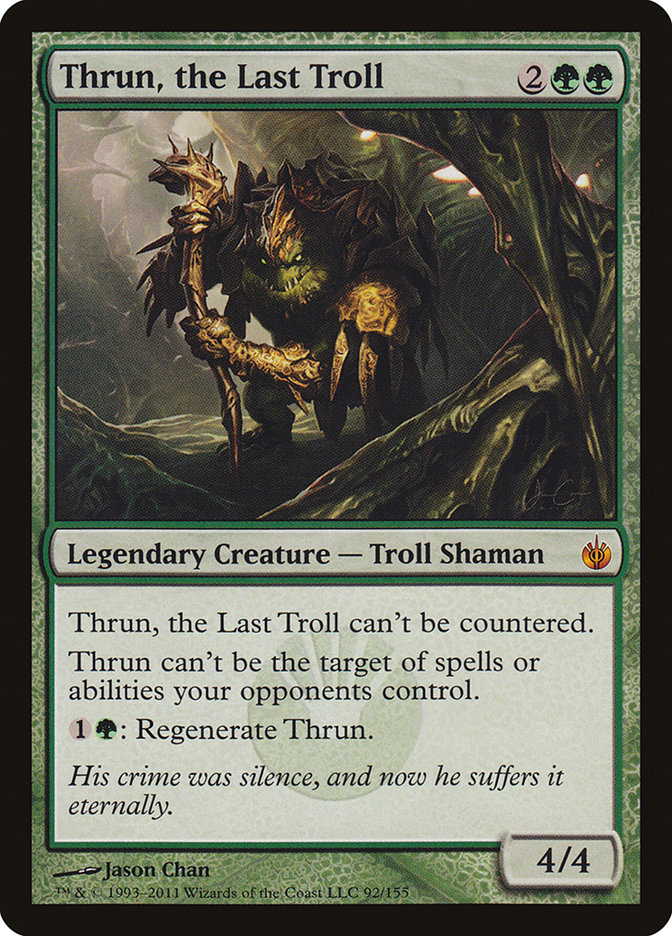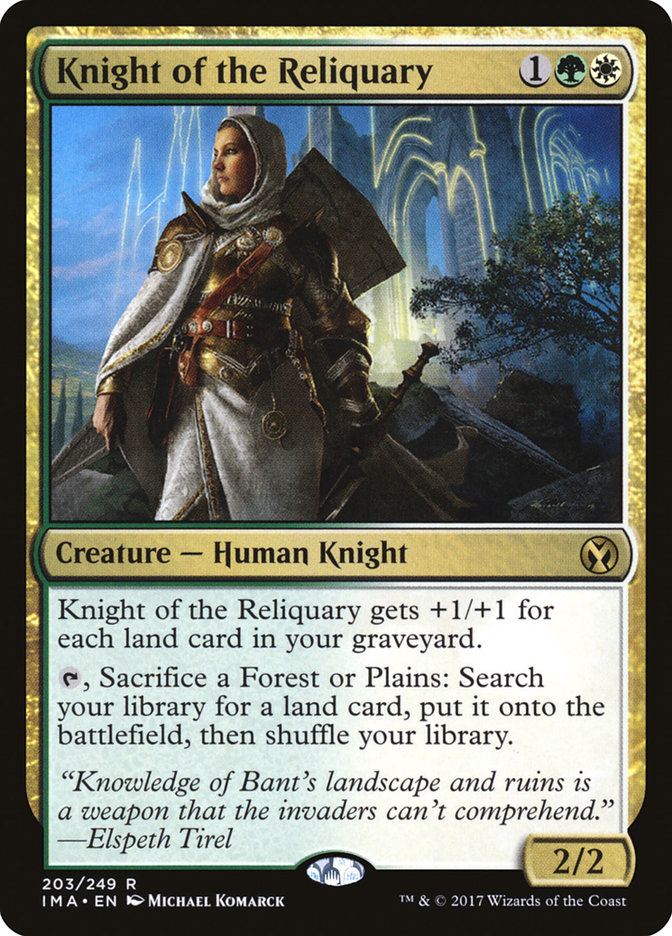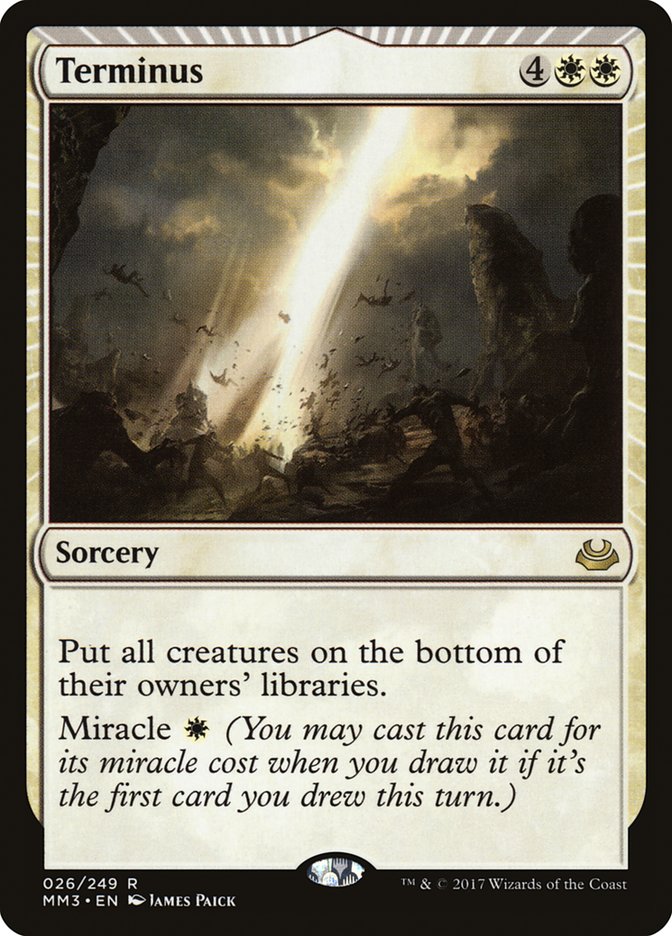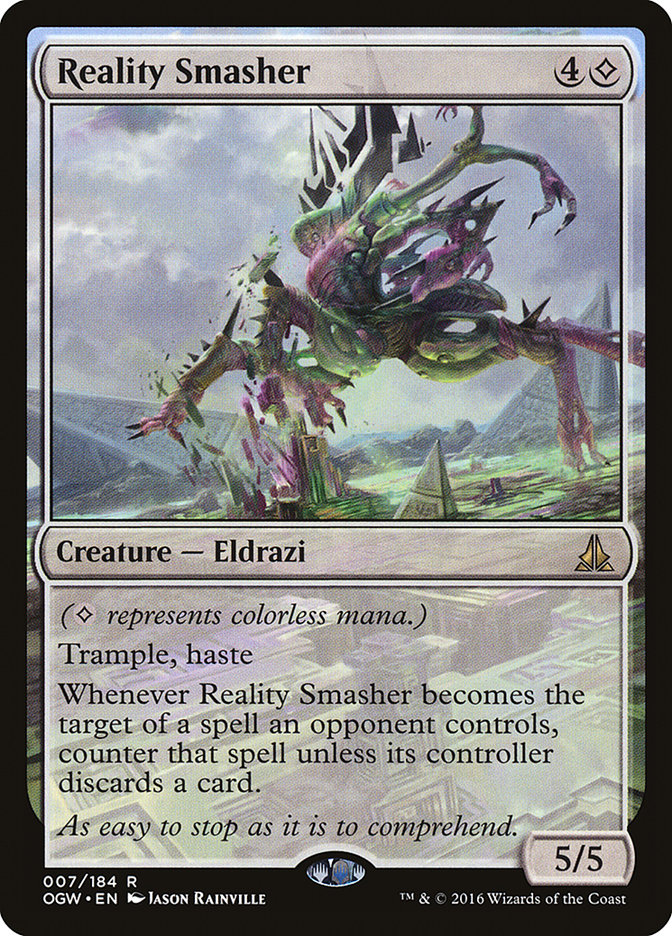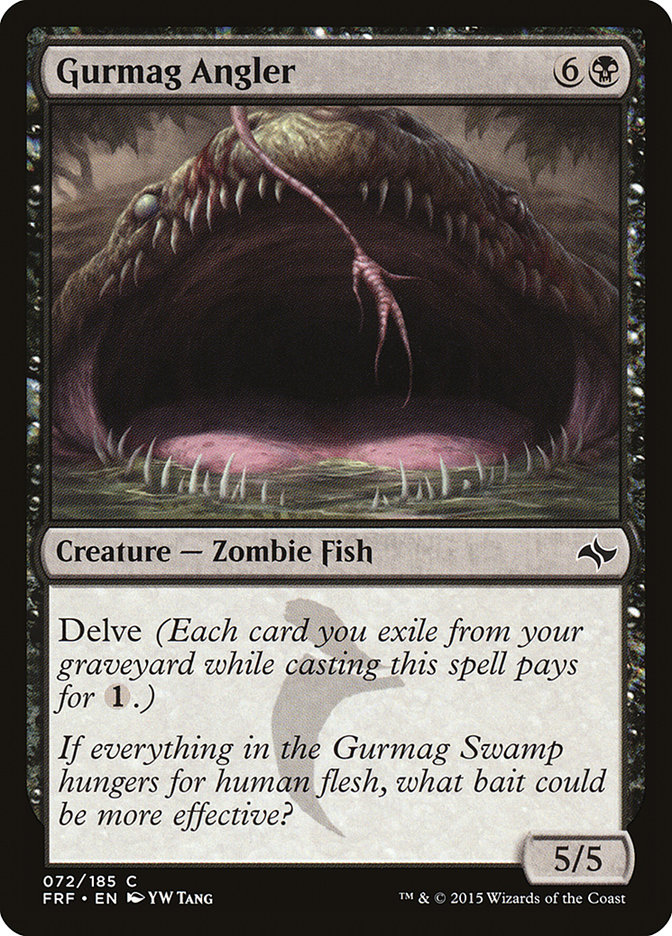“Wow.”
It was my first word in Brad Nelson and I’s “first response”
Fact or Fiction
article on Monday this week, and even after a few days to sit with the idea
of Bloodbraid Elf and Jace, the Mind Sculptor being legal again, it’s still
the most poignant word that comes to mind.
We are used to cards being banned in Modern, not unbanned, and even when
cards do get unbanned they are usually fairly unlikely to make a serious
impact because the format has passed them by – think Ancestral Vision,
Thopter Foundry, Bitterblossom, Wild Nacatl, etc.
However, Bloodbraid Elf and Jace, the Mind Sculptor are not awkward combo
pieces or relics from Standard/Extended’s past. They represent perhaps two
of the best four mana card advantage cards printed in a very long time,
with both seeing play in Legacy at various points. Having them unbanned is
both exciting and scary, as with Modern being in such a great place they
introduce a huge amount of uncertainty to the format.
While there’s no doubt that both cards–Jace, the Mind Sculptor, in
particular–are very powerful and destined to see a lot of play, what’s
also of paramount importance is how their reintroduction to the format
affects all of the other cards and decks around them. A metagame is often a
delicate balance, and shifting that balance even a little can cause ripples
throughout the entire format.
As Jace and Bloodbraid Elf enter the format, some cards get better and some
get worse. Examining those winners and losers can help give us a much
better idea about what the format is going to look like going forward.
Winner:
Kolaghan’s Command has a lot of synergy with Bloodbraid Elf, fitting well
into three-color “Jund” decks that want to play a value-based midrange
game.
You see, Bloodbraid Elf wants to be played in a deck with a lot of great
three-mana spells to make sure its cascade ability is as powerful as
possible, and Kolaghan’s Command can return dead copies of Bloodbraid Elf
from your graveyard for more cascading!
I broke Modern!
(Yes, this is very obvious.)
Losers
While Kolaghan’s Command getting much better with Bloodbraid Elf available
is fairly obvious, it’s important to note the ripple effect more copies of
Kolaghan’s Command floating around does to the format.
Anyone interested in playing powerful artifacts as a way to either stop
their opponent’s strategy or further their own has to be put on notice.
Typically artifacts are usually relatively safe in game 1s, as most decks
won’t be able to interact with them directly. Now with Kolaghan’s Command
reentering the format as a powerful maindeck option, and with Bloodbraid
Elf and likely Snapcaster Mage to ensure that many are cast each game, your
artifacts will not be safe.
Further complicating life for decks like Lantern Control and Affinity is
how both decks line up against the type of gameplay that Bloodbraid Elf and
Jace, the Mind Sculptor decks present. Jace, the Mind Sculptor in
particular is particularly devastating for Lantern Control, as threats that
aren’t affected by Ensnaring Bridge can be very problematic. Furthermore,
the sort of grindy, removal-heavy decks that Bloodbraid Elf and Jace, the
Mind Sculptor usually call home are going to be able to dismantle
Affinity’s creatures very well, making them extremely reliant on Etched
Champion to pull out wins.
Neither Lantern Control nor Affinity are happy to see this dynamic duo back
in action.
Winner:
With two new powerful tools, all sorts of fair decks in Modern get a major
shot in the arm.
This swing of the pendulum towards the fair half of the format means that
there will be an arms race for what deck can grind the hardest, and
Lingering Souls has always been one of the best grindy cards available in
all formats. Lingering Souls plays fantastically both with and against
planeswalkers, allowing you to defend your planeswalkers while giving you
easy and difficult-to-stop means to attack your opponent’s planeswalkers.
Lingering Souls is immune to spot removal, trades up very easily, and helps
slow the game down to give your powerful long game engines time to get
online. On the surface Lingering Souls seems to play better with Jace, the
Mind Sculptor in some sort of Esper deck, but I wouldn’t discount some sort
of four color
concoction looking to play Bloodbraid Elf and Lingering Souls
for maximum value. Lingering Souls plays phenomenally with Liliana of the
Veil, which could allow a Jund deck to simply throw in a Godless Shrine to
be able to occasionally cast the front side when necessary.
The weakness of Lingering Souls is in any non-grindy matchup, as it is far
too slow to impact the battlefield or provide any sort of meaningful clock
against combo decks. Combo decks like Storm, Tron, or Griselshoalbrand will
laugh at you playing a sorcery speed Midnight Haunting on turn 3 while they
untap and casually kill you.
This is my worry for the format- if Jace, the Mind Sculptor and Bloodbraid
Elf push out the middle parts of the format, that the decks will be
completely polarized between all-in combo decks and full on grindfest
midrange decks.
Loser:
LOL.
Winners:
While Geist of Saint Traft is more of a maindeck card and Thrun, the Last
Troll is more of a sideboard card, they both are cut from the same sort of
“midrange/control trump card” mold as Lingering Souls.
While both are weak to Liliana of the Veil, they are exceptional against
Jace, the Mind Sculptor and can provide solid beatdowns against Bloodbraid
Elf decks to finish them off before they can cast too many copies of
Kolagahn’s Command. Geist of Saint Traft in particular also provides a
pretty fast clock against combo decks too, making it more of a maindeck
option.
For those who didn’t play when Jace, the Mind Sculptor was legal in
Standard, “the Jace test” is going to be an important factor for creatures
going forward. If your creature can be easily bounced by Jace when it
enters the battlefield without gaining you any sort of damage or advantage,
it’s going to be under heavy scrutiny as far as if it should be in your
deck or not.
Loser:
Sorry, Todd Stevens, but Knight of the Reliquary does not pass the “Jace
test.”
Knight of the Reliquary is a very powerful creature when it gets going, but
if the format shifts into a more polarized state of removal-heavy
Bloodbraid Elf/Jace, the Mind Sculptor decks fighting against super fast
all in combo decks, cards like Knight of the Reliquary are going to end up
on the outside looking in. Knight of the Reliquary costing three mana and
not having any real effect unless you untap with it makes it major a
liability if it is killed before you can untap with it, and is also often
too slow to have any real effect on combo decks.
It’s understandable that Todd is unhappy about Jace, the Mind Sculptor
being unbanned, because his G/W Value Town deck is the exact kind of deck
that Jace, the Mind Sculptor decks are going to prey on. Todd may be the
mayor of value town, but Jace, the Mind Sculptor is the king of value.
Winner:
Speaking of even more bad news for creature decks looking to either go very
wide early or flood the battlefield with creatures while gaining
incremental advantages, Terminus is now back on the menu.
Creatures (4)
Planeswalkers (4)
Lands (23)
Spells (29)

A very interesting development in Legacy lately has been the emergence of
Sensei’s Divining Top-less Miracles, a deck that was not necessary while
Sensei’s Divining Top was still legal and frankly didn’t seem possible.
While I did
mess around
with the idea of playing Miracles in Modern a few years ago for my stream,
it was nothing more than an amusing challenge stipulation. The cards I was
required to play weren’t powerful enough to make the deck a serious
contender.
Enter Jace, the Mind Sculptor.
If you’re looking for power, Jace will give it to you, and with Jace in the
mix the deck starts to look like a very appealing version of the more
Standard U/W Control deck that has been common in Modern for a while now.
Saffron’s deck contains many traditional elements, and Telling Time is the
only real stretch accommodation for the miracle package that wouldn’t
likely be in the deck otherwise.
Saffron’s deck is a very interesting look at what will be possible in the
new Modern format.
Loser:
With removal spells commonplace, Terminus perhaps a thing again, and
Bloodbraid Elf and Jace, the Mind Sculptor providing a never ending stream
of cards, being a random creature deck is probably not something you want
to be doing in our new Modern format.
By definition all Collected Company decks are random creature decks, as the
restraints the card places on deckbuilding makes it so. While an end of
turn Collected Company is a reasonable answer to Jace, the Mind Sculptor,
at almost any other point Jace, the Mind Sculptor and Bloodbraid Elf (who
is basically the original Collected Company anyway) are going to do the
same job but better, while avoiding the restrictions that Collected Company
imposes.
Collected Company decks will also in theory struggle with fast combo,
making them another casualty in the middle of the format’s spectrum.
Winner:
Reality Smasher is already one of the best reasons to put Eldrazi Temple
into your deck in Modern, with its ability to close games quickly, attack
planeswalkers out of nowhere, and make life difficult for targeted removal
make it primed for a resurgence.
Reality Smasher passes the “Jace Test” with flying colors, showing that
haste may become one of the most important keywords in the new Modern
format. Creatures are going to have to do something immediately when they
show up, or they may end up doing nothing at all. This extends to the other
important haste creatures of the format, with Bloodbraid Elf joining
Reality Smasher, Mantis Rider, Hazoret the Fervent, Goblin Guide, Monastery
Swiftspear, and more.
Life is going to be a lot harder for creatures in Modern, so make sure you
pick ones that do something when they enter the battlefield!
Loser:
While Gurmag Angler has largely supplanted Tarmogoyf as the “big creature”
threat of choice in Modern in the last year or two, that may all change
soon.
Gurmag Angler lines up very poorly against Jace, the Mind Sculptor, and its
immunity to Fatal Push may become less important if Path to Exile sees an
uptick in play with various U/W Control decks making their way to the top
of the format. Tarmogoyf does a similar job for only two mana, and if
planeswalkers pick up in popularity, it won’t be hard to get Tarmogoyf up
to a 5/6 a majority of the time.
The more aggressive tempo decks that Gurmag Angler is usually found in also
usually struggle against the more over the top midrange decks that Jace,
the Mind Sculptor and Bloodbraid Elf promote, further damaging its utility.
Polarizing the Format
My biggest fear is that the insane value that Bloodbraid Elf and Jace, the
Mind Sculptor bring to Modern will serve to fully polarize the format
between very fast decks and very slow decks, murdering the middle of the
spectrum. You will either need to play Jace or Bloodbraid Elf in order to
keep up with the grind, or just go way under them and try to sidestep the
problem. This knocks quite a few of the very fun middle-of-the-road decks
in the format out of the equation.
Ben Friedman wrote
a very good piece yesterday
foreshadowing the possible “darkest timeline” where this is exactly the
case and I am right there with him in being worried for the health of
Modern overall. Jace and Bloodbraid Elf may not break the format, but they
may damage and skew it in a way that is much worse than what we have right
now. A card doesn’t need to be unabashedly oppressive to damage a format,
just ask Splinter Twin.
Only time can tell, so we will see how things shape out. For now, all we
can do is welcome Jace and Bloodbraid Elf back and start brewing.


